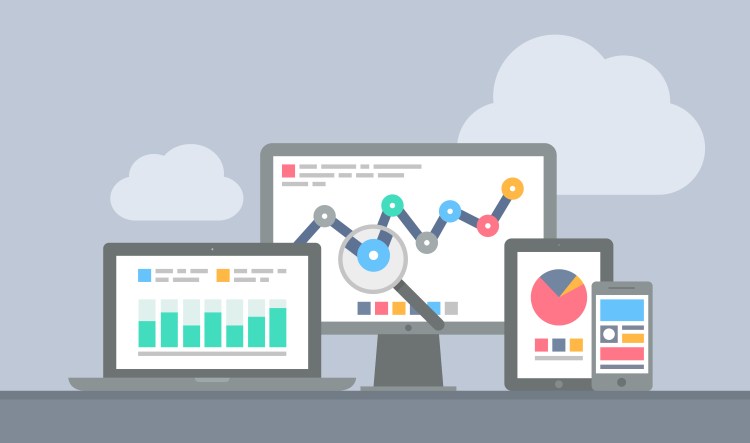Predictive analytics? Find out what works — and what doesn’t — in marketing analytics from our expert panel. VB analyst Jon Cifuentes is joined by Foursquare’s CRO Stephen Rosenblatt and Astea’s VP David Giannetto, author of Big Social Mobile.
Access the webinar on demand right here.
When it comes to marketing analytics, are you a rookie, a tweener, or a pro? Our recent webinar, “Marketing Analytics: the secret of segment domination,” asks you to take a good, hard look at your marketing skills — and offers insight on how you can get good enough to hang out with the big guys.
VB Analyst Jon Cifuentes offers an inside look at VB Insight’s deep dive into the marketing analytics landscape and discusses the most critical things marketers need to know, while Steven Rosenblatt, the CRO at Foursquare, and David Giannetto, SVP Services at Astea International, offer key insights from their move to the top of the marketing heap.
Level One: The Rookie
What’s a rookie look like? They’re all about the post-engagement huddle. “Most marketers are most comfortable reporting on what’s happened in the past to impact their future decision making,” Cifuentes says. “And really, with the rise in predictive intelligence and using advanced models to inform future decision making, it’s just leaving money on the table.”
“There is a huge opportunity in buried customer data, waiting to be uncovered,” says Cifuentes.
And it’s coming at a time when the stakes for CMOs have never been higher. Marketers feel more pressured than ever to prove their value — but most lack the ability to measure marketing impact accurately, or even at all.
That’s why spending on marketing analytics will increase by 70 percent in the next three years, with the big guys coming closer to a 100 percent increase.
But most companies are, at best, in the early stages of marketing analytics. True marketing analytics rationalizes users, platforms, and devices. Unfortunately, Cifuentes says, “it’s really challenging data to collect,” and it’s buried deep in hundreds of platforms.
Rookies, Rosenblatt said, go all-or-nothing. “A lot of times we’re so obsessed with acquiring more and more data to try and understand more things,” he says, “versus taking a step back and saying, OK, what’s really going to move the needle for my company and my business. Marketers can’t rush in to the data landscape without knowing what they want to come back with.”
Level 2: Tweenies
Gianetto agrees. “Data for data’s sake is really not valuable. It’s all just overhead.” To get called up, he says, “You have to have the ability to translate data, or analytics, or data science into something that can impact the business. Find that right moment or that right demographic or that right segment that you can really capitalize on.”
“If you’re in marketing meetings and you talk about customer journeys, and being customer focused, then focus on the customer,” Cifuentes says. “It’s critically important to have a firm grasp on the available data, channels, devices, and sources of that data for customers, especially as it pertains to segmenting your users and understanding their journeys as groups of customers.”
Especially if you want to get drafted into the major leagues.
Level 3: The Pros
The last stage of marketing analytics maturity, Cifuentes notes, has mostly been reserved for larger organizations just due to the data volume being captured.
Traditional BI has been tackling massive amounts of customer data for BI insights to improve business processes. “But because of the convergence of trends, of customer data, volume, and velocity just going up,” Cifuentes says, “those tools that are usually reserved for business-level analytics, like the data visualization stuff, the machine learning, big data — that’s bleeding over into the marketer’s side, especially around customer insights, which impacts segmentation.”
Plus, the rise of customer channels and devices means that there’s a growing need for marketers to be able to understand customers in the context where they are — that means their channel preference, their device preference, and their usage patterns in the context of all these potential digital engagements.
The real pros are companies that are customer-oriented, are channel- and data-agnostic, and have analytics down to a science. They support rapid segmentation without third-party tools and can use data science to create insights in minutes or hours, and not days or weeks.
But Cifuentes notes, “Without segments, it’s just data on a graph. Whether you’ve observed it or think it’s going to happen, it’s just data on a graph.”
Rosenblatt agrees that segments are the key. “We get so lost in the data that we forget sometimes the action– how to take action, what to do with it,” he says.
Leveling Up
Storytellers must lock arms with data scientists, and work collaboratively to tell the story around the data, figure out what’s actionable,and find insight that’s powerful. Everyone needs to start answering the question, How do we take advantage of something that we know that no one else knows?
Because that’s when you start knocking the ball right out of the park.
Get more tips and insights!
Access the webinar on demand right here.
In this webinar, you will learn:
- How modern marketers have already started implementing the same powerful machine learning being used by Facebook and Amazon.
- How companies like The Next Web have found success in repeatedly maximizing engagement through 1:1.
- What types of insights that machine learning will surface for you faster and with greater accuracy than previously available.
Speakers:
Steven Rosenblatt, CRO, Foursquare
David Giannetto, SVP Services, Astea International
Jon Cifuentes, Research Analyst, VB Insight
Moderator:
Wendy Schuchart, Analyst, VentureBeat

